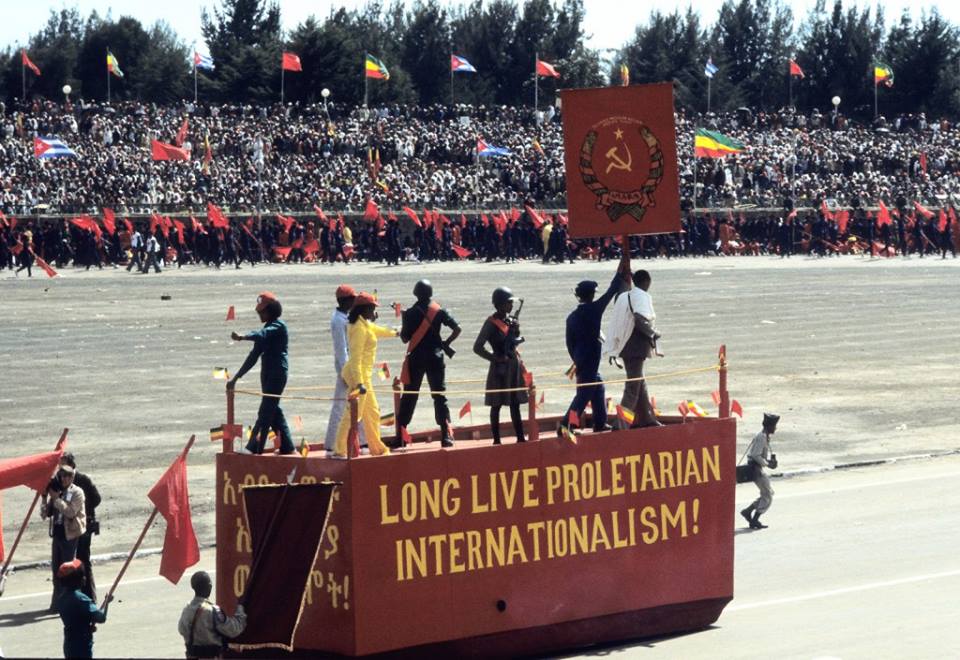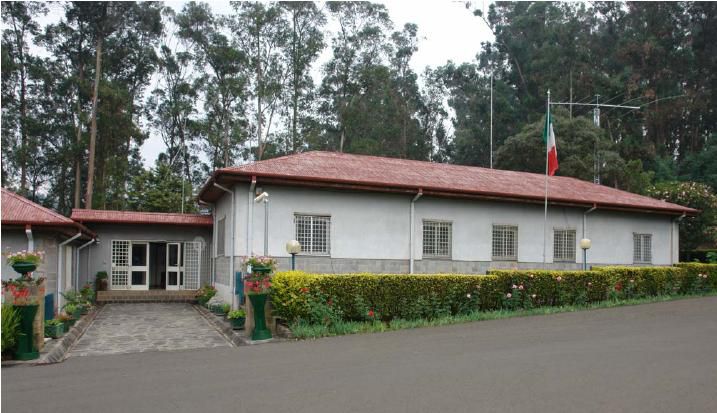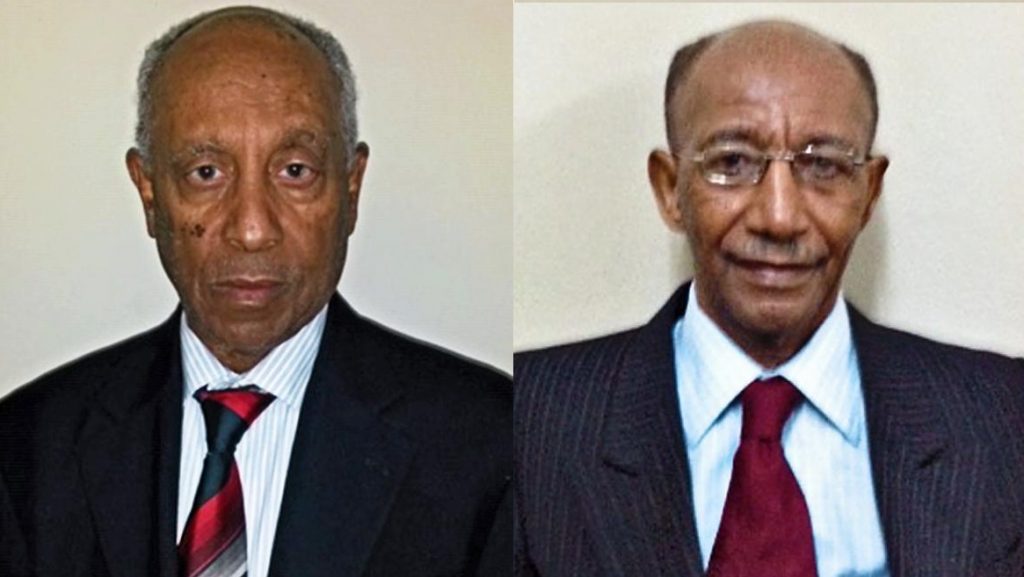Before we get to Ethiopia’s very ‘Julian Assange’ style story, first some context. The Cold War was an interesting time for Africa. With many of the nations being victims of European colonialism, their sudden independence throughout the 50s and 60s led to many rapidly aligning themselves with the east. Some would go on to become Marxist-Leninist states in their own right, others would take a position within the ‘non-aligned movement’ and still more would be toppled by western-backed military coups to install right-wing puppet governments. Ethiopia was one of the first category, soon installing the Derg.
The Derg

We’ve briefly mentioned the Derg government before, it being the result of an unusual left-wing military coup that chose to align itself with the USSR and Marxism-Leninism in 1974. Even many among the Ethiopian left distrusted this coup and a bloody civil war broke out almost immediately, with sectarian western-backed factions clashing with alternative Marxist groups and national liberation movements in minority regions, all while the Derg gradually consolidated its power. By 1976, their power had grown so much that they could begin a campaign of ‘Red Terror’, slaughtering opponents of all political stripes to assume authority. Even worse, 1977 saw an invasion from Somalia, ironically another nominally Marxist state at this time.
The inability of the Derg to effectively rule outside of major cities led to inevitable famine, particularly following attempted nationalization of the rural land. If you literally can’t step foot on that land without being attacked by rebels, you can’t exactly administer it, can you? The scale of starvation and death in this period (in)famously resulted in Live Aid, one of the world’s largest charity concerts.
On the 22nd of February 1987, the Derg officially came to an end, but merely as a ruse. The military regime of the Derg was reformed via referendum into the People’s Democratic Republic of Ethiopia. Rather than the Derg military government, the Workers Party of Ethiopia would be a civilian administration modeled after the USSR. In practice, its makeup was primarily of ex-Derg officials. Little had truly changed. Indeed, Derg head Mengistu Haile Mariam was the head of the Workers Party of Ethiopia.
Up until this point, the Derg had primarily survived with the aid of the Warsaw Pact. With the decline of the eastern bloc, this aid soon dried up, with the USSR formally withdrawing further support in 1990. By May 21st of 1991, Mengistu Mariam felt forced to flee the capital outright, seeking exile in Zimbabwe (where he remains to this day). The following week, the rebels seized the capital and the Derg regime officially came to its conclusion.
The Derg in Assange-Style Exile

So that’s all rather definitive, wouldn’t you agree? The Derg got crushed, rebels took over, not much to talk about. And why mention Julian Assange in the title? Well, as many of you may know, Julian Assange spent several years in internal exile, hiding in the embassy of Ecuador to avoid being charged with criminal activity. What if I told you that figures in the Derg did the same? …And that they continue to do the same?
I mentioned that Mengistu Mariam fled a week before the capital fell. Leading the capital in that time was Tesfaye Gebre Kidan, a man who had been a part of the Derg from the beginning and had been a military governor in the warring state of Eritrea, which would declare independence following the fall of the Derg. Understandably, his week as president wasn’t particularly productive. With the loss of their original president, it was obvious that the war was lost. The military turned to rampant looting and Tesfaye could only watch in despair. With escape becoming impossible, he and ten others fled to the only refuge possible: the Italian embassy.
The death sentence was very much on the table for most of these Derg officials, which is something the Italians weren’t willing to accept. Historical ties (of an often-unpleasant nature) left Italy unusually close to Ethiopia. Even more importantly, Ethiopian law dictated that even those charged with genocide could not be handed over to local authorities if the death sentence was seen as inevitable. For as long as death was believed to be possible, the officials had shelter… All the same, seven of these officials almost immediately left of their own volition.
With only four left, this swiftly became three as Prime Minister Hailu Yemanu committed suicide the following month. What remained was the last president of the Derg, the Chief of General Staff Adis Tedla and foreign minister Berhanu Bayeh. What began from then was a long, long period of internal exile, all while the system of the Derg was gradually dismantled and replaced. Long months swiftly turned into years. In 2004, not long after a notable interview, ex-president Tesfaye was allegedly killed by Bayeh, being hit on the head with a glass bottle after years of animosity between them. Then there were two.
Life in Exile

Much was made of the life of Julian Assange in his internal exile, with physical and mental health rapidly deteriorating as he languished within an embassy. Luckily for the two remaining Derg fugitives, they have a slightly more comfortable existence, albeit one that lasts much longer. The Italian book Known Guests sought to shed some light on this strange existence.
The Italian embassy is less a single building, as was the case for Assange, more-so a compound in which the two exiles live in what are described as a ‘dilapidated bungalow’ with their own bedroom, but shared living room, bathroom and kitchen. Due to arrangement with the Ethiopian government, they are allowed to walk three times per day between their bungalow and the garden of the compound, watched by Ethiopian guards. It’s hard to see how different this life is from prison.
While initially quite controversial and a source of contention between the Ethiopian and Italian governments, the desire to simply move on has allowed their existence to slip into obscurity. There’s little active movement to arrest them now, but to release them outright is also out of the question. Rather ironically, after being sentenced to death in 2009, all Derg sentences were commuted to life imprisonment two years later for those who had been in prison. But because these last two had not gone to prison… Death very much remains on the cards for them.
In 2018, there were rumors and suggestions that these final two officials may be pardoned, at last allowed to leave and visit their families. It has, after all, been nearly thirty long years of exile in an embassy. It seems however that nothing has come from this. And so, that is where we are. Gradually approaching the thirtieth anniversary of their self-imposed exile and it seems like public disinterest will allow the last two Derg officials to rot there. Or who knows? Maybe they will be released, for whatever short time they have left. Maybe they’ll have the same fate as Julian Assange in the end. Time will tell.


